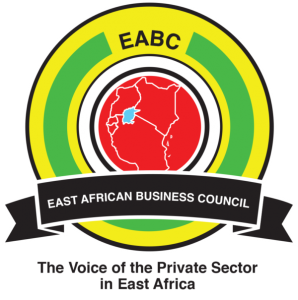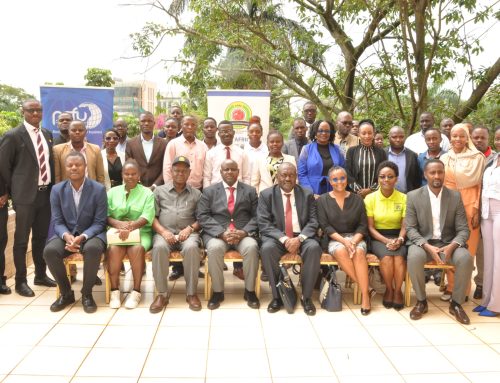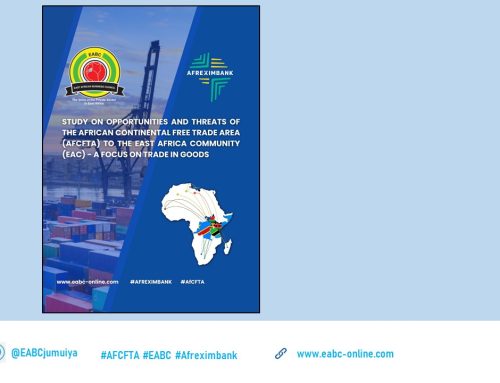Tuesday, 22nd February 2022 Arusha, Tanzania: The proposed maximum East African Community Common External Tariff rate of 35% is set to boost intra-EAC trade by USD. 18.9 million if adopted by the EAC Partner States.
This was revealed by the analysis done by EAC Secretariat on
the proposed CET rates of 30%, 33% and 35% for products classified under the 4th band(maximum band).
The East African Business Council urges the EAC Partner States to adopt a 35% maximum CET tariff rate in a bid to promote industrialization and strengthen the regional value chain.
In 2020, total intra-EAC trade stood at 11.8% amounting to USD 6.39 billion out of USD 53.75 billion total EAC trade globally. The proposed 35% tariff is set to boost intra-EAC trade to USD 6.4 billion.
Under the current EAC CET structure, the maximum tariff is 25% while the other bands are 0% and 10% with few sensitive products attracting higher tariffs ranging from 30% to 100%.
The 35% maximum CET rate is central to boosting the competitiveness of East African manufactured products in the continent and the globe.
The analysis shows if EAC Partner States adopt 30% or 33% or 35% as the maximum CET rate total tax revenues will increase by 3.9 %,4.9% and 5.5% respectively.
The 35% maximum CET rate for products categorized under the 4th Band will divert trade from global trading partners in favour of the EAC intra-regional trade. Uganda will accrue highest trade creation at USD 8,456,681 followed by Kenya and Rwanda at USD 5,099,829 and USD 3,714,495 respectively.
On employment, employment generation increases marginally with 0.02 % (5,055 persons) under the maximum rate of 30%; 0.03% (6,089 persons) with a maximum rate of 33% applied; and 0.03% (6,781 persons) increase in average EAC formal employment under the maximum rate of 35%.
On industrial development, industrial production increases under each of the proposed
maximum CET rates of 30%, 33% and 35%, with the highest rate of 35% conferring the
greatest gains in industrial output. There is a 0.02% ($7.7 million) increase in industrial output with an applied maximum rate of 30%; 0.03% ($10.3 million) increase in production with a rate of 33%; and 0.04% ($12.1 million) increase in output with the highest rate at 35%.
Adopting the 35% maximum tariff rate is set to incentivize industrial development; protect nascent industries exposed to unfair competition and safeguard industries against cheap and subsidized imports and jobs. The 35% maximum tariff rate will also attract investments in industrial value chains and transform the bloc into an export-led, industrialized economy.
Most of the products which have been considered to be assigned a maximum CET rate (4th Band) are under the EAC priority value chains as provided for in the EAC Industrialization Policy (2012-2032). The products include textiles, iron & steel and motor vehicles. The 35% CET rate will offer the necessary effective protection the region requires to drive regional value chains and drive industrialization through these products.
Furthermore, some products face unfair competition from cheap imports from Asian countries hence need higher rates to safeguard their production in the region.
Meanwhile, the EAC Partner States are set to commence trading under the African Continental Free Trade Area (AfCFTA) framework after the EAC Extra-Ordinary Meeting of the Sectoral Council on Trade, Industry, Finance and Investment (SCTIFI) adopted the EAC Tariff Offer under AfCFTA meeting the agreed minimum threshold of the 90%.
“We applaud the EAC Sectoral Council on Trade, Industry, Finance and
Investment for adopting the EAC Tariff offer for Category A products
under AfCFTA which is committing the EAC to immediately liberalize 90.2% product lines with other African Union Member States who are parties to AfCFTA Agreement, ” said Mr. John Bosco Kalisa, EABC CEO.
He urged for the quick submission of the EAC Tariff Offer to the AU Commission and the Republic of South Sudan to expedite the ratification of the AfCFTA Agreement for the EAC Private sector to start trading under the AfCFTA regime.





